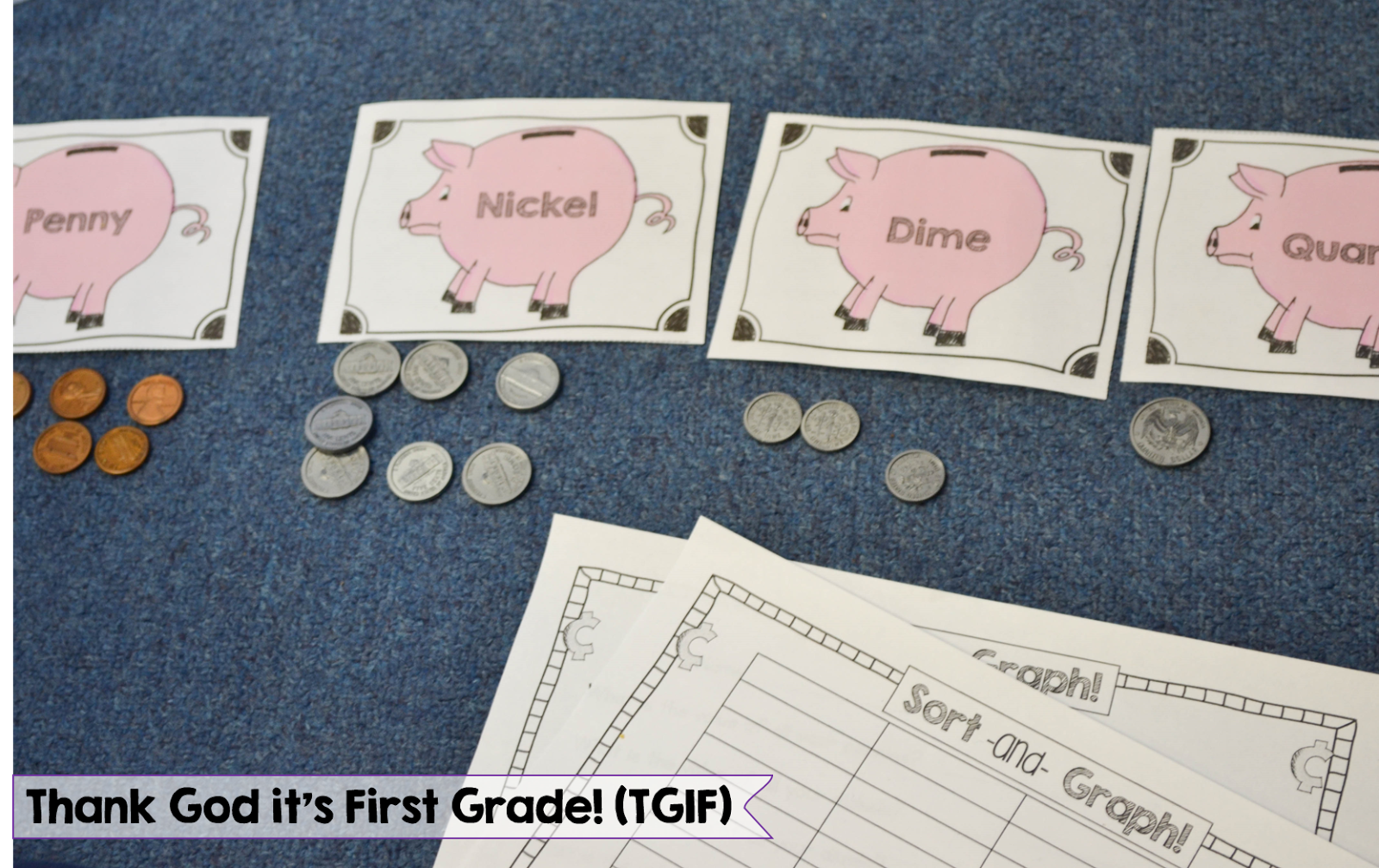Confession: This is the first time in 4 years that I have actually taught a money unit to my 1st graders.
GASP!
My old school was a Common Core only school. Common Core... ONLY! Money isn't in the 1st grade Common Core, so it was cut from our yearly schedule. We would show coins during our morning calendar routine and sporadically here and there for exposure, but we never taught an entire unit or even a lesson surrounding money. To be honest, we rocked our test scores so we didn't have any regrets about cutting the unit.
*My first year teaching, I did use my Penny Pockets behavior management program which allowed us to practice money in a fun way*
Alas, it is a whole new year, in a whole new school and things are different! My new team sat down and we discussed cutting back our money unit to 2 weeks and we decided to focus on the mastery of coin recognition and counting same sets of coins (all pennies, all nickels, etc.) up to $1.00. After the first week, it was easy to see who had already mastered these skills and those students were challenged with counting mixed coin sets.
All that being said, I wanted to create a small money unit that didn't have as much exchanging coins and buying items, but more focused on an introduction to coins! I think this unit would be appropriate for grades K-1!
Here are some pics of the unit in action:
Race to $1! Fun partner game to challenge your higher students.
There is also a race to $2 and a race to _______ option!
Match 'em up! For each item there is a same-coin tag and a mixed-coin tag for differentiation.
One of my littles practicing counting same-coin sets!
Sort and graph! One of my intervention groups practicing their coin identification.
A resourceful sweetie checking our reference posters!
Heads or tails? One of 3 different money games to help students practice counting coins!
Another group doing the sort and graph activity!
The unit contains:
reference posters
4 differentiated activities
3 partner games
practice pages
It is also on SALE just until the end of tonight!!
Click the cover above to check it out :)
Other first grade teachers, do you teach a money unit even though it isn't in the Common Core?!?
Other first grade teachers, do you teach a money unit even though it isn't in the Common Core?!?












































